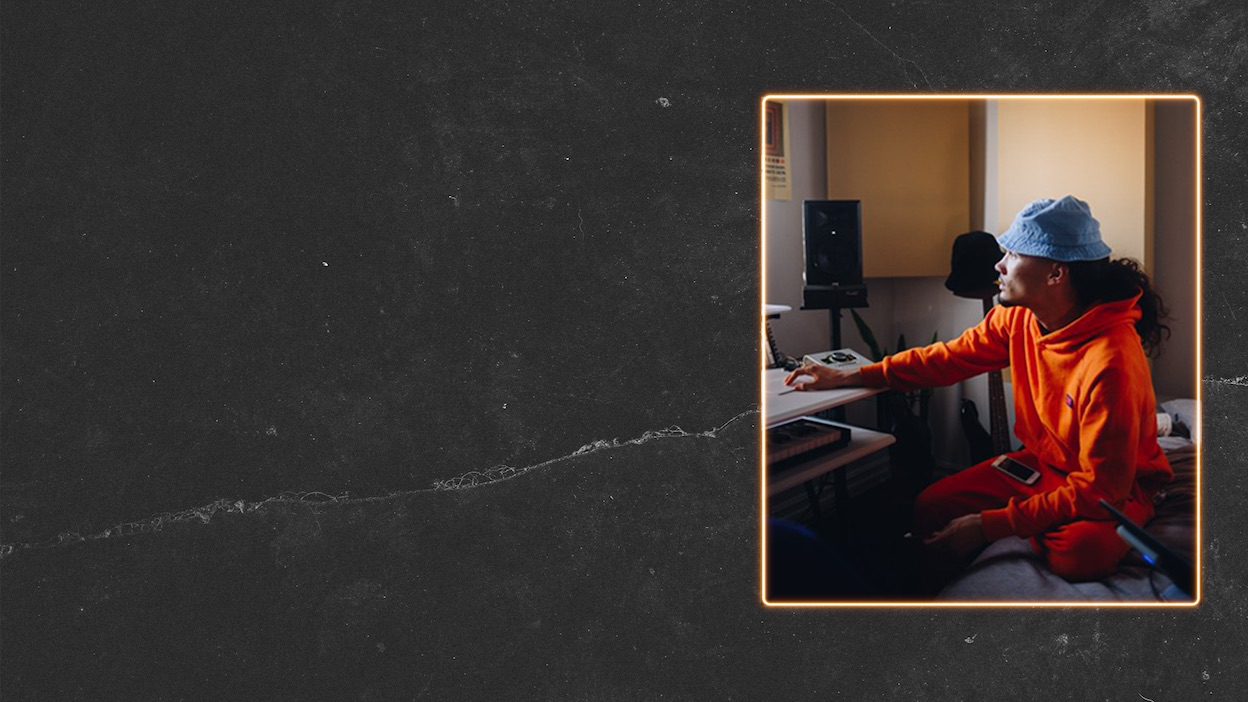
You may know Bay Area native Seiji Oda from assisting his younger brother lil ricefield on his viral record, “Trapanese.” Since the song’s release in 2019, it’s amassed over 29 million streams on YouTube and Spotify. Since then, the rapper-producer released his quarantine EP Blue in 2020, and recently a three-track love letter to his car aptly titled 98 Corolla. However, instead of gas, this car is filled to the brim with calm, spaced-out slaps and anime references.
We had the pleasure of hosting Seiji Oda for our first Type Beat Toolkit Workshop. He opened the workshop by explaining his approach to studio sessions, collaboration, and even his mixing and recording techniques. As the workshop progressed the rapper opted to have more intimate discussions with the group. Opening up the floor for conversations around artist development, the importance of branding, narrative building and industry awareness. We picked out our favorite takeaways from our conversation with Seji Oda so that you too can pick up some of this free game that you can apply to your career. You can also check out the full recorded workshop here.
Be Consistent:
This was a major point that Seiji reiterated throughout his workshop. You must be able to create whatever you create consistently to be taken seriously as an artist. This does not mean you have to make content every day, but it is significantly important to dedicate a certain amount of time to your craft every day. You want to ensure your audience is engaged and growing. Also, note that consistency does not always mean creating an insane amount of content. Develop a steady flow, and be aware that you don’t have to flood fans with too much content to be consistent.
You Are a Brand:
No matter how commercial or indie you want to be, whatever you make as an artist or producer is inevitably a product, and that’s okay! You should be familiar with your target audience, and be intentional on how you’re aligning your brand to reach that audience. If you have any goals of getting more exposure, it’s important to start thinking about who else you envision engaging with your music and how to access them.
You Don’t Need a Manager, Yet:
As a creative, it often feels overwhelming handling business while simultaneously focusing on art. Seiji gave some helpful insight into the daunting question of when in a producer or artist’s career that one should obtain a manager. He emphasized that there should not be any rush to get a manager when starting out. The time to get a manager should be when you have “something to manage.” You should instead be working on your style, skills and your brand. Another point he made was that it shouldn’t be solely your manager’s responsibility to create your vision, nor is it for them to “put you on” or make you instantly famous. Instead, a manager should be your partner, where you handle the creative and they handle the business.
Don’t Worry About Making A Hit Song:
It’s hard to tell if a catchy song could “go viral.” The main priorities you should focus on when promoting your content are to be active on social media, focus on guerilla marketing efforts and find ways to engage your audience organically. Think about the content you consume and what you engage with on a given day and use that as a starting point! Following these tips will not guarantee that your single will become a hit, but it will help you increase your listenership! Remember, consistency is key!
Vibe Check Before Studio Sessions:
The tone and use of a studio session must be intentionally set in order for all creative parties to be most efficient with that studio time. This does not necessarily mean there isn’t any room for humor and the occasional cat-off, but without any direction, the session could lead to less productivity and everyone wondering more where the time went. Seiji also emphasizes making sure the space is clean and organized to promote positive workflow and to make sure you are hydrated throughout, especially if you are doing vocal work. Thanks for the pro-tip! Our meditation-loving workshop host also reminded us of the importance of implementing meditation or other soothing practices at the beginning of a session to ensure that the setting is one of comfort and relaxation.
Stay in the loop with our next Type Beat Toolkit workshop by following us on Instagram and logging on to our website.